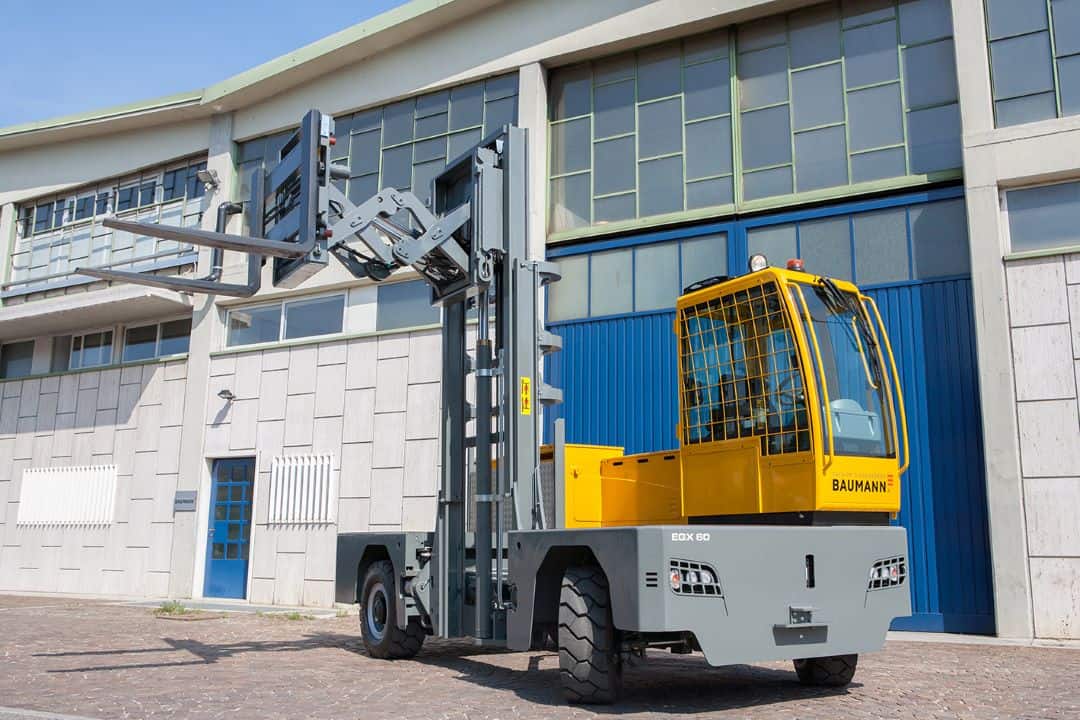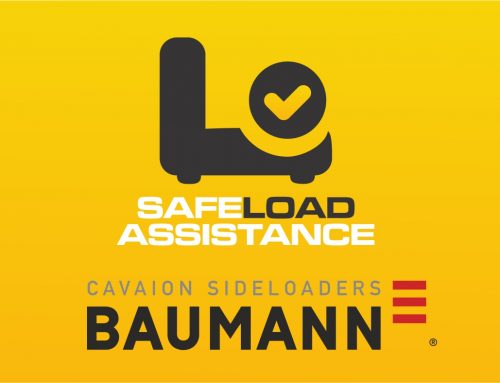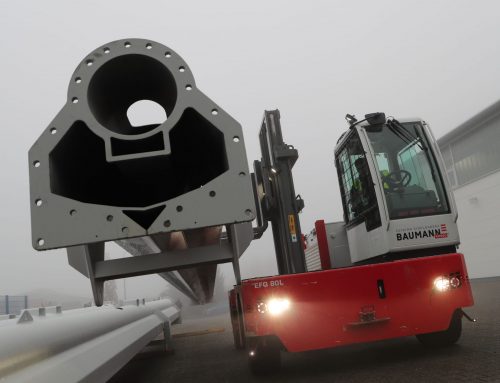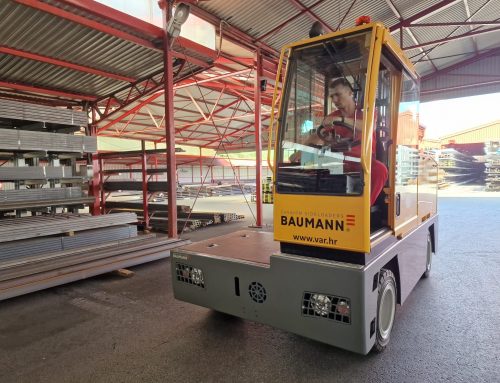In 2022, 10% of all Baumann sideloader orders included a pantograph attachment, the highest proportion ever.
Pantograph Popularity
The history of the pantograph principle is long. It is said that Da Vinci had one to copy drawings to canvas, (the name comes from ‘panto’ from the Greek for ‘all’ and graph, to ‘write’) whilst the idea has been used in a range of applications, from draughtspersons tool to litter pickers, shaving mirrors to electric trams.
The pantograph is a method of extending reach way beyond the truck chassis, facilitating double-row stacking and single-side lorry loading and unloading.
The option of using a pantograph, crossed arms that pivot via one or two pairs of joints, adds efficiency for those wanting to block stack.
Block stacking in theory adds greater storage density, although in practice it can greatly reduce selectivity and usually ends with uneven rows, thanks to Last In, First Out (LIFO).
As loads are picked, open space is left to access the load behind. The result is a honeycomb effect, with wasted space ‘baked in’. Without storage systems, such as cantilever racking, empty, yet unavailable space (called vertical honeycombing, horizontal honeycombing occurs depth-wise) places further strain on long load handlers.
Sideloaders with pantographs are a great way to overcome the issue. Sideloaders reduce wasted aisle space by default, whilst pantographs add the double-deep flexibility. Yet, the same can be said for extending forks, so why the popularity of pantographs?
—
Extending forks are sometimes referred by the brand name, KOOI. These patented telescopic forks were invented by a Dutch company (De Kooi is a region of Zuid-Holland in The Netherlands), MSE-FORKS and were sold via a local company called KOOI BV, (later acquired by Cargotec/Moffett).
In 2000, MSE-FORKS took over the sales and marketing activities from KOOI BV relating to the hydraulic KOOI® forks. The official brand name KOOI-REACHFORKS® was acquired by Meijer Handling Solutions. The company later developed a joint venture with US business Cascade to develop the Cascade-KOOI Reachforks brand.
—
Telescopic forks can, and do, do the job, but their rated capacity is typically calculated with the forks retracted.
It means that to handle a load with a weight of, say, 7 tonnes, a fork capacity of perhaps 10 tonnes is needed. That’s a thick fork. With long flexible loads, two sets of forks may be considered along a spreader beam, to share the load capacity and reduce fork thickness, however in that case the pantograph is ultimately a more cost-effective option.
In recent years, Baumann has refined its own pantograph designs to allow the arms to fold in neatly within the frame. That reduces the height and depth of the attachment, keeping any potential lost load capacity to a minimum. In some cases, such as coils or I-beams, the load depth isn’t really an issue, in which case the pantograph offers a very attractive proposition.
Discover The Benefits of Baumann Sideloaders For Yourself
We hope this post went some way to changing your perception of sideloaders with our sideloader myths well and truly busted!
Pantograph reach is one of many brilliant features of Baumann sideloaders. Get in touch with us to discover more features or talk about buying a new or used sideloader.






